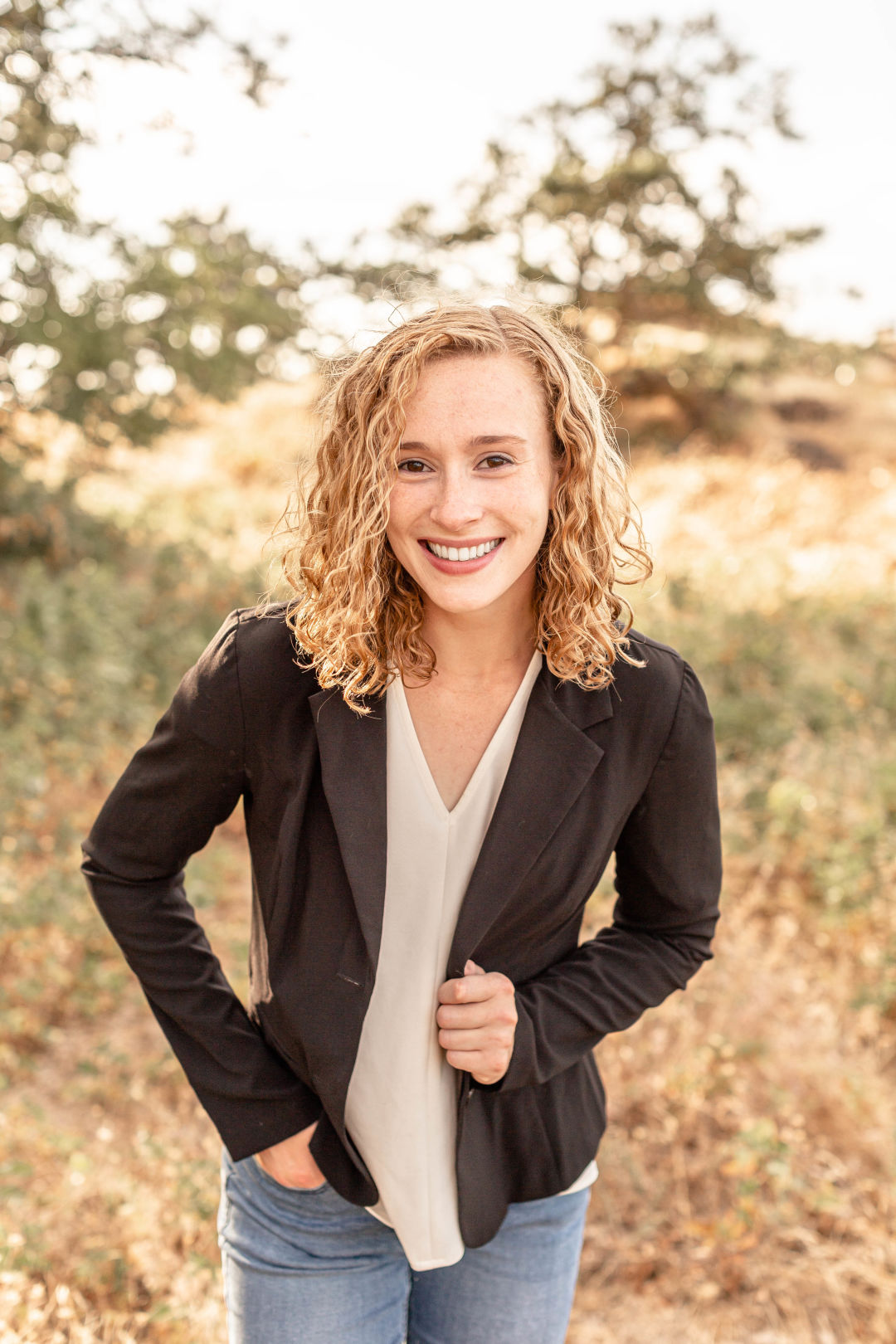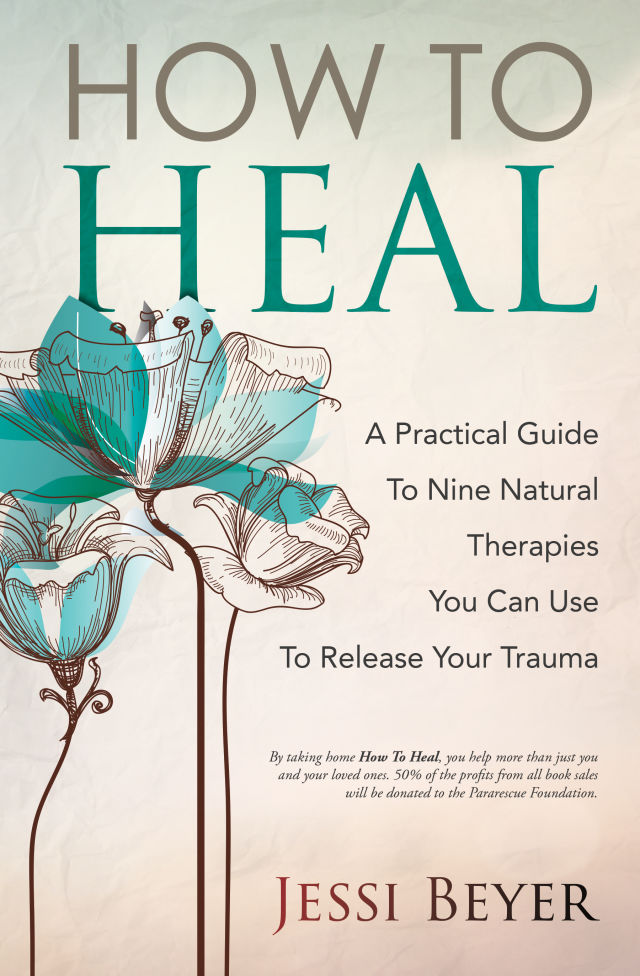A New Book Aims to Provide Alternatives to Talk Therapy

"The more people talk about the fact that mental illness is not a weakness, it’s not something to be ashamed of, that’s really going to turn the tides on people feeling like they just have to toughen up and work through all of that without asking for help and without recognizing that it’s something that needs to be healed," Jessi Beyer says. Her new book, How to Heal: A Practical Guide to Nine Therapies You Can Use to Release Your Trauma explores alternatives to traditional talk therapy.
Image: Courtesy Jessi Beyer
In the eight or more weeks since the coronavirus upended the lives of just about everyone around the globe, there’s been a surge across America indicating mental distress is on the rise. According to a study from researchers at San Diego State University and Florida State University, “roughly 70 percent of Americans experienced moderate-to-severe mental distress—triple the rate seen in 2018.” These grave figures point to a larger discussion about how coronavirus is shaping how we view trauma and mental health.
Jessi Beyer—an Oregon-raised, Hillsboro-based author whose new book, How to Heal: A Practical Guide to Nine Therapies You Can Use to Release Your Trauma, was released May 5—has been interested in trauma since high school, after her own struggles with suicide in a codependent relationship. She spent a year in Scotland studying veterinary medicine, but decided it wasn’t a good fit and moved back to the United States to pursue a degree in psychology at University of Minnesota.
“Once I started learning more about [trauma] from a professional angle it just intrigued me so much, and I wanted to be able to fill in the holes and provide the knowledge that I didn’t have when I was struggling. And that’s kind of what set me off down this path of writing this book,” Beyer says.
In How to Heal, Beyer explores natural, alternative therapies to traditional talk therapy, including equine-assisted therapy, trauma-sensitive yoga, meditation and mindfulness, and more, which she talks about in detail, including professional analysis and personal experiences. Portland Monthly spoke with Beyer about her new book, alternative therapies, and how to recognize trauma amid COVID-19.
Portland Monthly: Congratulations on the book release. I couldn’t help but think about the coincidental timing of this book about mental health and alternative therapies coming out right now. Does its timing feel somewhat strange to you?
Jessi Beyer: Yeah, I mean, you don’t think I could have planned a global pandemic to coincide with this? You must underestimate me.
It was a brilliant marketing strategy.
It was brilliant, right?
No, I originally waited until May to launch this book because May is Mental Health Awareness Month and it’s also National Military Appreciation Month, and 50 percent of my profits are being donated to a military charity, so that was all coinciding nicely.
Then when this all started happening it was like, “Wow, this is so timely.” This is something that people are now having the time to read. It’s not lost in the business of everyday life. But it also gives them an opportunity to make plans to prioritize their mental health and see that they are worthy of healing. They don’t have to just buck up and brush it under the rug.
Can you give me some background on this book? Where did your interest in psychology and trauma develop?
My interest in medicine in general was trauma. It was what I was most involved in. And once I started learning about psychological trauma as well, a lot of that really resonated with what I had been through and what I saw other people struggling with.
When I was in high school, I went to one day of talk therapy, and I was so uncomfortable with it I literally ran out of the building and I never went back. And I didn’t know that there were other options for healing. I didn’t know that there were these other therapy options. And I truly believe that I would have healed a lot faster and a lot smoother if I had professional help through one of these other options.

How to Heal: A Practical Guide to Nine Therapies You Can Use to Release Your Trauma
Image: Courtesy Jessi Beyer
So when all of those interests and that personal background kind of came together I was like, “I want to explore what other options there are for healing from trauma where you don’t have to sit in a therapist’s chair, where you don’t have to be a small room with a tiny window.” That kind of got me interested in some of these other things.
What made you flee from talk therapy?
I know a lot of talk therapists. I think they’re great humans. I think that therapy is very well supported by research, but it’s very uncomfortable. You know, you walk into this room and you sit down in a chair and this person is sitting across from you that you’ve never met, that you don’t trust, and they expect you just kind of spill your whole story to them. When I was in the situation I would be fidgeting and I would be really uncomfortable and I didn’t trust the person, and it was just not a happy scenario for me.
What I’ve found with a lot of other people is that they’re too uncomfortable to even go in the first place. There’s so much stigma surrounding talk therapy, and therapy in general, and so they won’t even go. And then they’re missing out on that professional help that they deserve and that they need in order to heal.
Trauma seems like such a weighty word with a lot of misconceptions. What can you tell us about what trauma is and isn’t?
I think the most important thing to understand about trauma, and especially what differs it from other psychiatric conditions, is that there’s a very somatic piece to it. It’s not just something that happens in your brain, it’s not just a cognitive process. It’s something that’s very physical. And that weight and that trauma can sit in your body. What I love about some of these mind-body approaches is that they work on that physical piece as well as the psychological piece.
As far as what trauma really is, it’s an event that interacts with you in such a way, it causes enough heightened emotions, that you carry that with you. For example, if you’ve been in a car accident, you can think back and remember, “We spun and it was scary and there was this loud crash,” and whatever else happened, but you don’t start reliving that right now. If that was a trauma memory, a memory that’s processed incorrectly, you would start to panic and you would start to hyperventilate and you would feel like that was happening again right now. Your body would think it was happening. Your brain would think it’s happening.
In that way, trauma is very different. It makes it very difficult to just sit and talk about it because it is so visceral and it’s so emotional and it’s so physical.
Do you think what we're experiencing right now with coronavirus could be described as a “collective trauma”?
I wouldn’t say universally that the coronavirus is a trauma, because a trauma can be different things for different people. But I know for a fact that some people are feeling traumatized by this. I know for a fact that this concept of being in isolation and being away from other people is causing trauma memories in people to flare up and to trigger them.
I think absolutely it could be a trauma [for some people]. I think, at the very least, it’s allowing everyone to take a look at their mental health and say, “This is something I need to prioritize, and this is something that I want to make sure I’m supporting when life goes back to normal.” And it’s led to a lot of creativity in how people are addressing their mental health now.
One of the things you point out in your book is this minimization of mental health issues and traumatic experiences. Where do you think that comes from, and what do you think is important for people to recognize about trauma as it relates to coronavirus?
We’ve been living in a society for so many years where strength is valued and where mental health, and mental illness specifically, is considered the opposite end of the spectrum from strength. In my opinion, strength and weakness are one spectrum and mental health and mental illness are a completely different spectrum. So the more people talk about the fact that mental illness is not a weakness, it’s not something to be ashamed of, that’s really going to turn the tides on people feeling like they just have to toughen up and work through all of that without asking for help and without recognizing that it’s something that needs to be healed.
I think right now the first step is just acknowledging that it’s OK for this to be scary. I think that’s where that kind of “starving children in Africa” argument comes in. It’s like, well, “I live in a first-world country. I have access to food and water and health care. There’re people around the world that don’t. They have it so much worse, and, therefore, I can’t be scared right now, or I can’t be upset or angry or traumatized or whatever.”
So the first thing that I would encourage people to do is to recognize that your feelings are valid. If you’re scared out of your mind right now, that’s OK. If you’re totally fine with what’s going on, that’s also OK. You know, whatever is coming up for you, just acknowledge that first, and once you’ve broken down that own stigma in your own mind, then you can start taking steps towards caring for your own mind.
This goes into a whole conversation about how some therapists are doing Zoom meetings. You can make sure you’re spending time outdoors and connecting with your family. Kind of all of the self-care and mental health tips that are going around right now. But I think the piece that’s missing from that is the understanding that it’s OK to not be OK right now. And you need to accept that. You can’t just let someone else tell you that your feelings are valid. You need to understand that if you’re traumatized by this, that’s totally OK. You’re not broken, you’re not dramatic, you’re not overreacting.
Accepting that within yourself puts those mental health and self-care activities into a much more effective light.
How to Heal: A Practical Guide to Nine Natural Therapies You Can Use to Release Your Trauma
50 percent of all proceeds will go toward Pararescue Foundation, a nonprofit organization that supports and preserves the pararescue community during and after their time in uniform. Learn more about Jessi Beyer here.




